How and why we need to encourage better fire safety management.
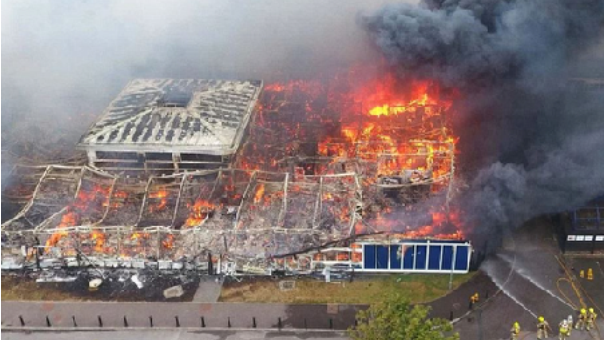
A personal view from experiences in the business world.
Are you in sales?
This article is designed to be a short and simplified version of the presentation given at the assemblage on the above date. It is designed to highlight the main points raised and perhaps initiate some thoughts and debate.
The initial part of the this session focused on the the fact that fire safety management is a product that needs to be "sold" to the management team as being worthwhile. Therefore all those involved with fire safety management need to be able to sell this idea effectively. Easier said than done! All too often I see fire safety people standing up in front of an audience and showing pictures of a burnt out building and expecting the audience to sit up and listen.
We get it, well we would wouldn't we, because most of us live and breath this stuff. The likelihood is that the senior managers of a company, cannot and do not see themselves this vulnerable to fire. So, simply trying to shock them into listening probably isn't the most effective way of addressing the issue.
The next problem we need to tackle is less prevalent but none the less awkward. If a senior manager takes on board everything that we might suggest what are we offering? Is there a guarantee that there will be no fire incidents or loss to his business? I don't think there are too many legitimate fire safety professionals that would offer that! So how do we sell this to a person who has a business to run? What we are trying to do here is to:
- Reduce the potential for risk.
- Make the outcome of a fire less disatrous for the business.
- Maybe change the attitude of the workforce [and the management team] around their perception of fire.
At present the focus is very much on Fire Risk Assessment. As an industry we seem totally obsessed by these three words. The question is, why? Is this the key to all fire safety issues or is it just because the law requires there to be one? Are there no other aspects that warrant discussion with those who are trying to manage a business, premises or establishment in what quite frankly are challenging times?
Don't misunderstand my meaning here, fire assessment is important, it should form part of the backbone of the effort to reduce the impact of unwanted fires to our entire society but there are issues here.
- Does the business leader understand what a fire risk assessment is? [In other words when he engages a fire risk assessor or any other fire safety professional, is he "an intelligent client"]?
- Does the business leader believe that because a fire risk assessment has been completed, the job has been done and the document can sit proudly on the shelf for further reference [In other words, to gather dust and as evidence of activity should the fire authority ever ask].
- Does the business leader feel that because arrangements have been made his responsibility has been taken on by another person?

Finally, are we sometimes guilty of forgetting what a fire risk assessment is? I see so many "fire risk assessment documents" that are not really fire risk assessments at all. Although in many cases very accurate and thorough documents, what they are, in fact are reports on fire safety inspections with a list of issues that need to be rectified. Let's be clear, the fire risk assessment document should state, what the risks of fire are to the relevant persons and to identify the general precautions that need to be taken. By definition that means that there needs to be some sort of strategy against which the effectiveness of any prevention or protection can be measured. More on that later. The specific issues should be addressed by the people on the ground carrying out remedial works but the fire risk assessment should identify, in principal, what should be in place and where these general principals are not effective for any reason. [Significant findings].
So, in general terms do senior managers understand fire risk? To answer this question I would state that there are only two categories of people who really understand what fire can do. They are:
- Firefighters, who have experienced first hand what happens when fire gets out of control.
- People who have experienced a fire themselves.
Given that, what do we expect form a senior manager, generally, they don't want to have a fire in their business, they know it's bad [they may not realise just how bad, but it's a start]. Most would like "someone else" to deal with it. That is fine if they have a "competent person" but they need to realise that this does not absolve them of their responsibility to ensure that the risk is managed effectively. So often the "competent person" isn't competent, just delegated!
The question is how to make these seniors leaders aware and engage them? My advice, from experience is that you make this as simple and as graphical as possible. If you are presenting to a board, here are some points you might like to note:
- Your input should initially take no longer than 5-7 minutes.
- All your points should be illustrated by graphs, statistics or very short action lists.
- If you are using a presentation use 1 or a maximum of two slides to make your case.
- Split your case into four sections.
- The issues that need addressing and how that is currently impacting the business in macro not detail [Why we are talking]
- What the actions need to be to mitigate the risk, give a number of options where ever possible [What could be done]
- The way in which work will be done, likely impact on normal working long it will take [How & When this could happen]
- Cost and benefits [What will change as a result for the business?]
You can split your presentation slides into this 4 box model to help you present. DO NOT go into the detail [although you should always have the detail to hand should you be asked questions]. Most people at director level have a short attention span and won't want to
hear about smoke calculations or how many people can escape through an 850mm fire door! In essence follow this three rules BE BRIGHT, BE BRIEF and BE GONE ! If you follow these guidelines you have more chance of sparking an interest because you are addressing their specific issues with possible solutions. They don't want to listen to you telling them of all the problems they have and how terrible it will be when it all goes wrong.
Leadership
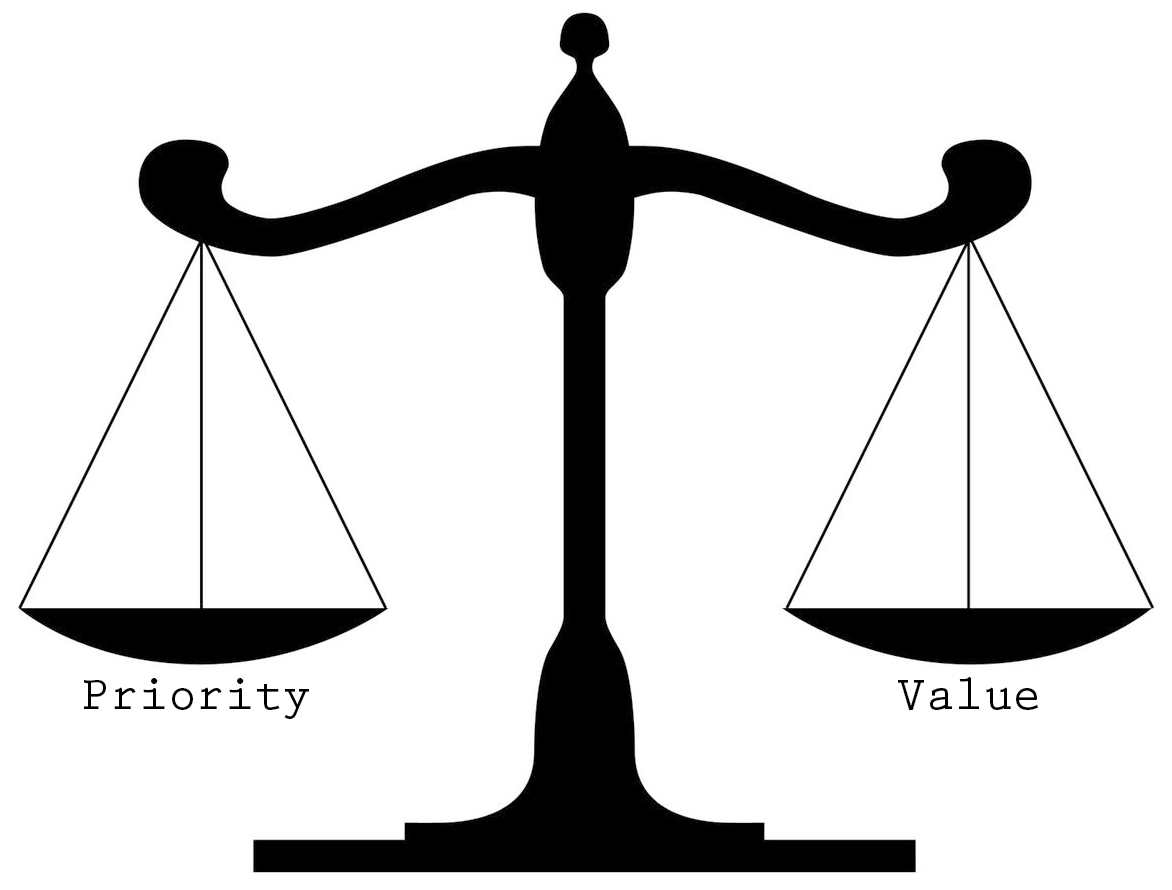
When all is said and done, the level of commitment will depend on the senior leadership team and the the way they engage with fire safety. "Safety is our number one priority" How many time have you heard this statement, normally made by a spokesman standing outside the burnt out ruins of their once proud premises. My comment to this statement is usually "evidently not that day!" The problem is that if fire safety is your number one priority, that means its the first thing you deal with, until something more important comes along, like a shortage of raw materials or industrial unrest.
Fire only hurts when it happens and thankfully that is not too often, therefore the need for it to sit at the top of a list of priorities is not that obvious and it will slip. If however, if all activities are carried out with fire safety in mind, as part of the normal way of doing things, it becomes a normal consideration and ultimately, a value that the company lives by and it will be supported as natural behaviour by the entire workforce. Propping a fire door open becomes just as antisocial as smoking in the staff restroom, it just doesn't happen. So, fire safety needs to be a value not a priority, if we are to make it work. This will require demonstrated leadership if the workforce is to be engaged.
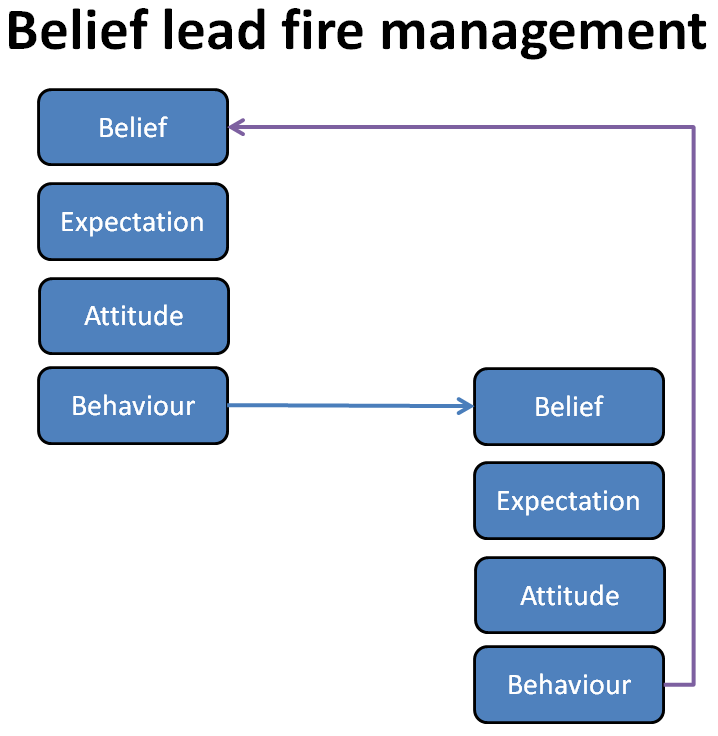
The stumbling block for all of this is how do you make a workforce change the way they think? Not easy and there are libraries full of books that might help but the following model works for me. If you can behave in a way that makes the people believe that "this is the way to go about things" then those people are more likely to have a higher expectation of themselves and their colleagues, attitudes will change and so will behaviours. Those behaviours will then be seen by managers who's beliefs about their workforce and the expectations of them will also be modified. The point is the change has to start with senior management leading by consistent demonstration of believable behaviours, not just when they think they are being observed but consistently. This type of change takes years to achieve but the benefits are massive and really help to keep a business working well in the long term.
If we agree then, that there is a need to ensure leadership that delivers fire safety as a value and that fire risk assessment is part but not the whole picture what are we missing? The answer has to be, strategy. Again there are a number of books you could read [and probably should read] on fire strategy but there are some key points that we need to remember because others won't. People assume fire safety. Actually we do too but maybe to a lesser extent. The public will go to work and assume that "someone" has ensured that the building is safe. That is not an unreasonable expectation and yet those of us in the business will sit in a restaurant with our significant other halves, looking at the ceiling to see if there is detection and a sprinkler system, until we are reminded that we are not at work now!
Strategy
From a business point of view, the senior leaders need to be able to simply understand what their strategy is. The problem is, that it is sometimes difficult to help them realise what we are driving at. The process that I have worked on is quite simple and is called the "Desirable Predictable Fire Outcome". [DPFO] and forms part of the IAM fire safety process I use in my own company. Let me be clear, this is not about life safety, that should be a given and we must ensure that that is covered prior to any other considerations. What DPFO does is takes the high risk part of the business and the most likely worst case fire scenario. It then looks at what the business needs to achieve to remain in business and to have only the amount of impact that it can sustain.

Here is an example. This kitchen was in the middle of a publicly accessed passenger hub. The worst case fire was a deep fat fryer incident resulting in hot oil alight and no staff capable of dealing with it effectively. The DFPO for this are stated that a fire in this area would need to be contained and the operation around it could not be disrupted for more than 30 minutes. To this end, the area was surrounded by a 1 hour rated structure and protected with detection, sprinkler and cook-line suppression plus smoke extract. The fire service response to the area was estimated as 6 minutes for the first pump, 8 minutes for the second and a well organised in-house alarm response team was provided. Eventually circumstances conspired to realise that very fire scenario and as predicted, the fire was contained, the alarm raised within seconds of the the incident, followed by the activation of the AFA and evacuation of the zone in question. The cook line suppression activated and the response team arrived to find the fire out, smoke extracted and the fire service on site 2 minutes later. The scene was then investigated for any further signs of fire, after which the occupants, all 4500 of them, were allowed to return and business resumed as normal in just under 25 minutes.
When this system is used properly and realistically, it can take the guesswork out of fire safety and help managers fully understand what they are buying into and the benefits that it will bring should the fire event actually happen.
Other ways of illustrating how a strategy might work consist of the grid system I developed some years ago. This looks at particular functional areas and the systems that are available, why they are in place and how effective they are. So in this way a manager can clearly see what is there, why it's there and how it's currently performing. Any aspect can be included both passive and active measures should be included although this table concentrates on the active measure only.
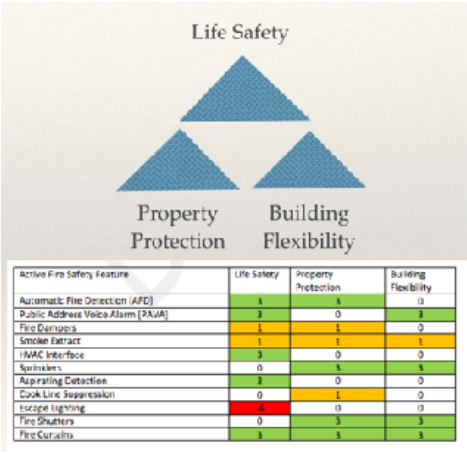
Taking this principle a stage further and aligning it with some work done already done in PAS 911 it is also possible to represent a fire strategy in a graphical way that is easy to understand and therefore useful for us as fire safety professionals when discussing such principals with business managers. The first image depicts the possible strategy within a building or part of a building. By taking some of the major aspects of fire safety that are key to the area and establishing their importance within this strategy it is possible to build a "picture" of the shape of the strategy
In this illustration it is obvious that management elements like control of combustibles and incident response are key but that compartmentation and fire service response also play a key part of the strategy. The question is, if this is the strategy, what does the performance of this strategy look like. The answer typically might look like this example in the second illustration. [I have not included the calculations that drive this model] here we see that the reality is an under performance in all but two of the areas. Of particular concern might be compartmentation and fire response as they appear to be suffering most. Naturally every strategy will look different and this system can identify under provision against strategy but also over provision. It is also important to understand that by increasing the ability to control combustibles and increasing the effectiveness of compartmentation it may be possible to ease the pressure on another factor. [Always bearing in mind what your DPFO was intended to be!] In the last of these illustrations it can be seen that there is an over provision.

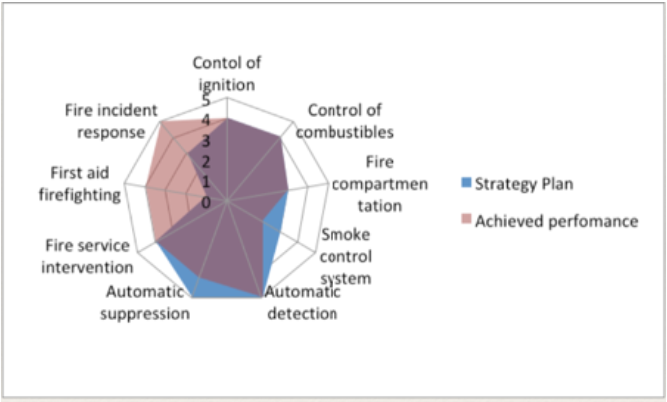
The dark area shows where the strategy and the performance align. The blue areas are where the is an under provision and the lighter area shows an over provision. From here there are a number of choices that could be made. Review the strategy in the light of what can more easily be provided, [always ensuring that this will still deliver the DPFO you need]. Reduce the effort on those things that the strategy does not require and use that resource to boost the areas that need more support. Finally it might be possible to completely change the way you want to manage fire in this area. You might decide to go for a more infrastructure based strategy rather than the rather intervention and managed scenario currently in place. The point is, as soon as you have clear picture of what is going on it is much easier to start looking at what can be done and to get to grips with the rationale behind those decisions.
Final Thoughts
As fire safety professionals we should ask ourselves what our function really is. Are we here to prevent fires or are we here to create fire safety? I would argue that we should really be doing the latter. To do that we need to do a number of things:
- Make fire strategies accessible and understandable for senior leaders.
- Provide context and options that will deliver appropriate levels of fire safety to the client that we are serving.
- Guide business in the use of the fire risk assessments that we provide and help them to be able to manage the issues that should concern them most.
- Help our clients to identify, understand and manage change within their business, so that they can better anticipate those things that will affect the level of risk to which they are exposed.
If we do all this, we will be doing a great service to the fire safety of our clients, their businesses and the public. It will also reflect well on the fire industry which at present has questions to answer, but has not really been given an opportunity to engage to the best of it's ability.
As fire safety professionals, we are not always looked upon as those bringing good news. Many would rather hope that the whole thing would just go away. We know it won't but it is our job to make sure that our message is heard loud and clear and that it can be seen by business as the bringer of solutions not the highlighter of problems. Yes, fire safety is important and fire safety doesn't happen by itself or by having a fire risk assessment on a shelf, so it is down to us, the fire safety professionals, to show businesses how they create fire safety in their business so that they will prosper sustainably into the future. For all these reasons, we need to succeed!
Acknowledgements:
Most of this work is based on a number of studies that I carried out and were issued in a paper called Dynamic Fire Risk Strategy first written in 2003. I would also point out that some of this work is inspired by work carried out in PAS 911 and to some extent the excellent work in "Fire Strategies - Strategic Thinking" by Paul Bryant.







